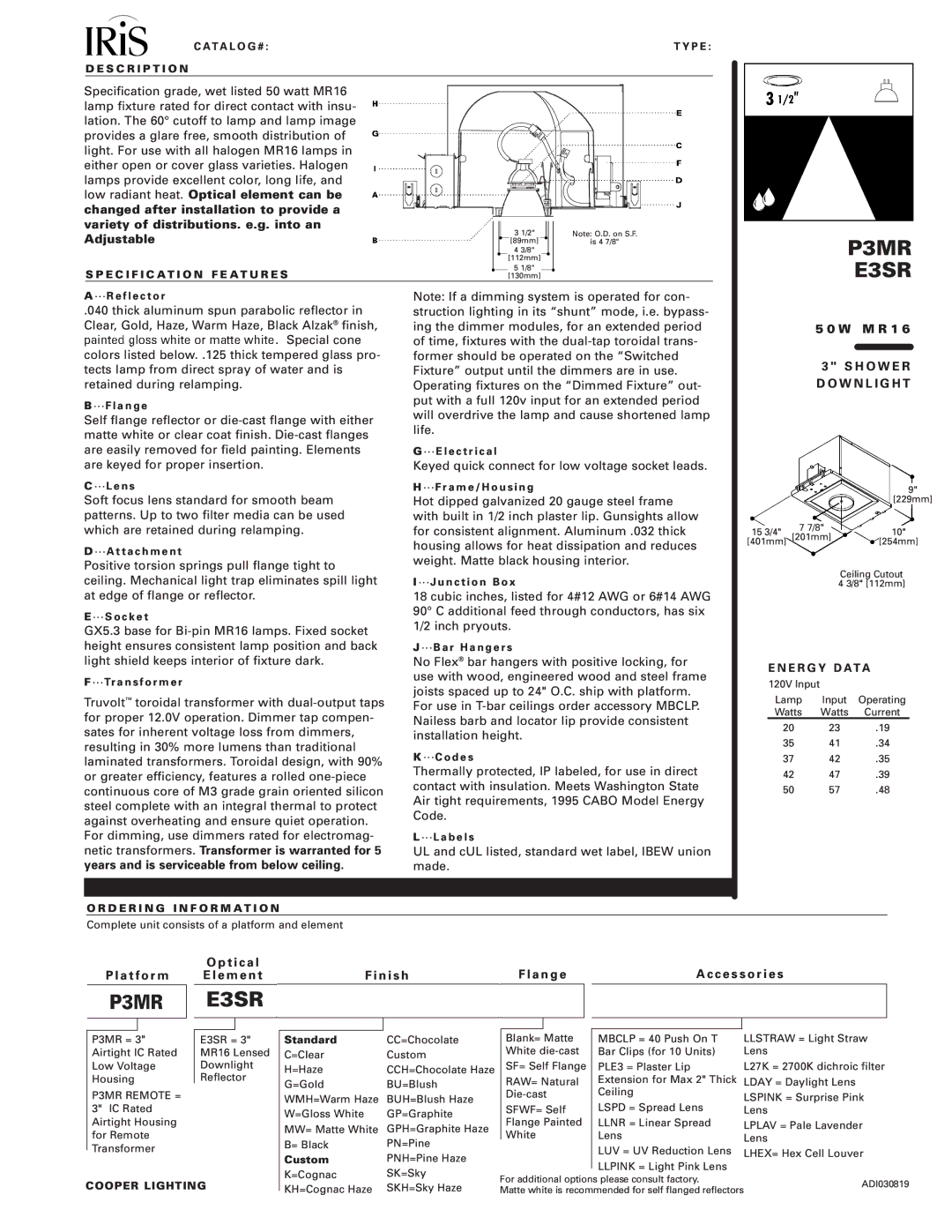E3SR specifications
Cooper Lighting's E3SR series represents a significant advancement in the field of lighting technology, combining efficiency and performance in a compact design. The E3SR is particularly well-suited for commercial and industrial applications, offering a versatile solution for various lighting needs.One of the standout features of the E3SR is its use of advanced LED technology, which provides exceptional illumination while consuming less energy compared to traditional lighting sources. This energy efficiency translates to lower operational costs and a reduced carbon footprint, making it an environmentally friendly option for businesses seeking to enhance their sustainability efforts.
The E3SR incorporates a highly durable housing made from premium materials, which not only ensures longevity but also protects the fixture from dust, moisture, and impact. This ruggedness makes it ideal for use in demanding environments, such as warehouses, manufacturing plants, and outdoor areas. Moreover, the fixture is designed for easy installation and maintenance, minimizing downtime and operational disruption.
Another key characteristic of the E3SR series is its superior light distribution. The fixture features precision-engineered optics that produce uniform light patterns, thereby reducing glare and enhancing visibility. This quality is particularly beneficial in settings where safety is paramount, allowing employees to work with confidence in well-lit areas.
The E3SR also offers various lumen output options, allowing users to select the ideal brightness level for their specific application. This customization ensures that spaces are appropriately illuminated, enhancing productivity and comfort. The fixture is compatible with dimming systems, providing further flexibility in light management and energy savings.
Additionally, the E3SR is designed with thermal management in mind. Its innovative heat dissipation features help to maintain optimal operating temperatures, which can extend the lifespan of the LEDs and improve overall performance.
In summary, the Cooper Lighting E3SR combines energy efficiency, durability, and exceptional performance to meet the diverse needs of commercial and industrial lighting. With its advanced LED technology, superior light distribution, and user-friendly installation, the E3SR stands out as a reliable choice for businesses looking to invest in high-quality lighting solutions. As organizations increasingly focus on sustainability and energy savings, the E3SR aligns perfectly with those goals, making it a forward-thinking addition to any lighting strategy.

